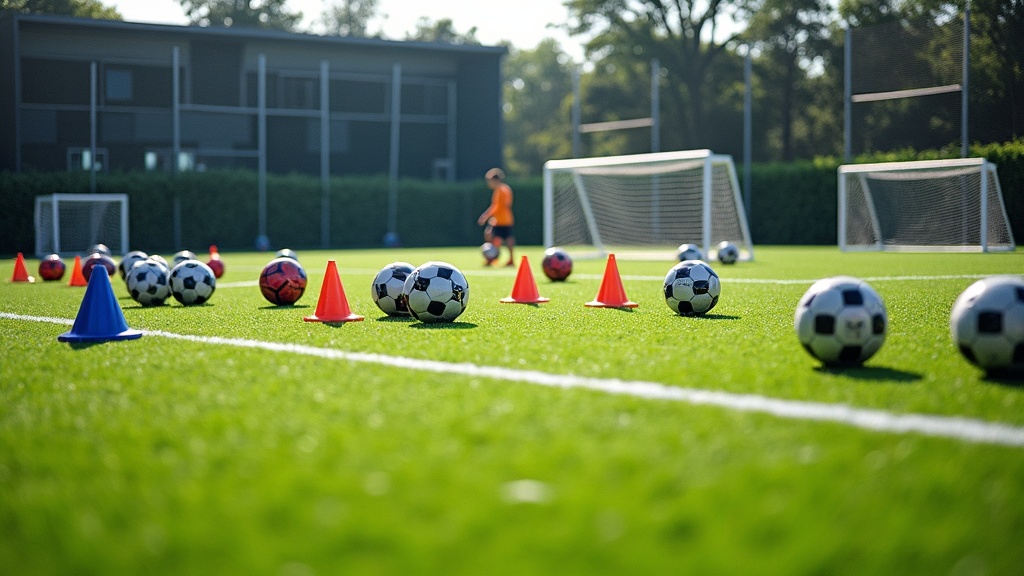If you’re into soccer coaching, you’ve probably noticed how the landscape keeps changing. Not long ago, coaching was all about running drills and telling players where to stand. Now, the game calls for a more flexible and thoughtful approach, with coaches blending new technology, modern tactics, and a big focus on player development as whole people. Here’s a run-through of what I’m seeing as the latest soccer coaching trends that will help you create smarter, more adaptable, and happier teams.

Changing Focus: From Drillmaster to Player Developer
Coaches used to be the center of attention, running intense drills and barking instructions. These days, there’s a bigger emphasis on guiding players, helping them make smart choices on the field and even off it. Player development now includes not just technical stuff, but also social and mental growth. More coaches are embracing open conversations about mindset, emotions, and how to deal with mistakes, pressures, or setbacks. Focusing on the whole person shapes better players in the long run.
The buzzword I keep hearing is “learner centered coaching.” That means giving players some control, asking open-ended questions, and using gamelike activities instead of just running rigid drills. Players learn by solving problems and making decisions—exactly what happens in real matches.
The Rise of Data and Video in Everyday Coaching
Technology has made a big splash in the soccer world, and it’s not just for pro clubs with deep pockets. More community and youth coaches are using video tools and basic stat trackers to help players learn. You can break down game footage, freeze moments, and chat through decision-making. That’s way more powerful, and relatable, than just talking about a game in the locker room afterward.
- Video Analysis: Players can watch themselves and see what worked or didn’t, compared to just hearing about it.
- Mobile Apps: Simple apps are out there for tracking passes or movement. No data science degree needed!
- Tactical Board Platforms: Coaches can map out plays, build animations, and share directly to players’ devices.
If you want to check out tools that make this a breeze, it’s worth having a look at what’s available at SoccerTutor.com. These resources are pretty handy for visual teaching and putting together sessions with clear tactical goals.
Game Based Training Over Line Drills
Gone are the days of watching kids stand in line for their turn. Coaches are switching to game based training, with small sided matches, clever challenges, and lots of chaos. Why? Games get players thinking and moving like they would in real situations, plus it’s way more fun (and they’ll hustle harder when they’re enjoying themselves).
- Design activities with decision-making options, like “keep or pass” instead of “just dribble through cones.”
- Emphasize realistic pressure, so players learn to cope under stress.
- Encourage creativity. There’s value in allowing players to try things, even if they mess up the first few times.
Game based training also encourages players to collaborate and communicate naturally, reinforcing lessons that stick better than repetitive drills. Letting players solve tactical problems keeps the energy up and stimulates healthy soccer IQ development.
Developing the Whole Athlete: Fitness, Mindset, and Wellbeing
Modern coaches don’t only coach soccer; they focus on physical and mental wellbeing, too. Part of this is because burnout and injuries can start really young if players aren’t looked after. It’s now common for coaches to talk openly about mindset, self care, and building resilience.
- Injury Prevention: Mobility work, smart warmups, and balanced workloads are a big focus at all ages.
- Rest & Recovery: Coaches schedule downtime and encourage players to listen to their bodies.
- Mindset Coaching: Techniques for managing stress and staying positive, like using simple breathing or goal setting routines.
Both club and school environments are seeing more support for players as people. There are workshops for mental health, nutrition chats, and encouragement for multi sport participation to keep things fresh and fun. This all in one approach to athlete development is now recognized as essential, not just a nice bonus.
Positionless Play and Tactical Flexibility
It used to be that kids were put into rigid positions from a young age. “You’re the left back, that’s final.” But now, the thinking is that everyone learns more and becomes a better player by playing all over the pitch. Coaching sessions rotate players into different spots, building understanding of the full game instead of just one role.
Tactical flexibility is a big deal, too. Teams don’t just play one system all season. Coaches now prepare their groups to handle different formations, ingame switches, and unique opponents. Players are encouraged to analyze what’s happening and react, not just memorize one set of instructions.
This approach preps players for higher levels, where being able to play a couple positions or adapt on the fly is a huge asset. It also means coaches teach decision making, tactical awareness, and communication along with skills.
Individualized and Small Group Training Sessions
“One size fits all” group sessions are on the way out. Instead, coaches are splitting time between the standard team session and extra small group or even one on one training. These targeted sessions can address specific skills, help a player rebuild confidence, or focus on injury recovery.
Many coaches use individual development plans, where they sit down, chat with the player, and set mini goals together. Using feedback from video reviews, fitness trackers, and honest conversations, they keep these plans practical and motivating. This personalized attention really makes a difference, especially in youth and developmental programs.
Players who get this attention often progress faster and feel more ownership over their improvement. Parents appreciate knowing what their child is working on, and the ongoing feedback loop keeps everyone on the same page.
Building Effective Communication Skills
The best coaches now put just as much effort into how they speak as what they teach. Modern communication means asking questions instead of handing out orders. For example, instead of “Why didn’t you pass?” try “What did you see when you got the ball?” This simple change helps a player process their own game and make smarter choices next time.
Having regular checkins—both as a group and one on one—builds team culture and trust. Players feel safe to speak up, ask for help, and admit mistakes. That leads to faster growth and tighter team bonds. This makes communication a really important coaching skill.
Good coaches also pay close attention to nonverbal cues. Things like body language, tone of voice, and even off field interactions help coaches build stronger connections with their teams.
Embracing Diversity, Equity, and Inclusion in Coaching
Coaching teams that reflect the world around us is gaining momentum everywhere. Embracing diversity means opening spaces for more types of players, leaders, and backgrounds on every team. Coaches who take time to learn about different cultures and ways of learning help players feel accepted and reach their best.
It’s also about adjusting sessions so they’re accessible to different ability levels, and making sure your group values respect and sportsmanship as highly as winning. Teams become tighter, and individuals develop broader life skills by learning with and from people who aren’t all the same.
Soccer organizations are increasingly offering training to help coaches build an inclusive environment. This is helping to set a positive tone that benefits both teams and the wider community.
Keeping Up With the Latest Resources and Networks
Soccer coaching never stands still, so having a go to spot for drills, modern tactics, and learning is really important. There are loads of online platforms and resource libraries where you can grab session plans, diagrams, or even chat with other coaches for advice. If you haven’t already found your favorite, SoccerTutor.com is worth checking out; they keep their material fresh and useful for coaches at all levels.
- Check out resource libraries for session plans, animations, and modern drills.
- Plug into online forums or coaching groups for advice and networking.
- Stay open to new certifications or workshops—it’s a practical way to keep learning and stay motivated.
Building a personal network of coaching colleagues can be invaluable for solving challenges, sharing ideas, and supporting ongoing growth. Whether in person or online, these relationships foster a strong coaching community.
Common Questions About Soccer Coaching Trends
Here are a few things I get asked all the time when talking coaching trends, especially by newer coaches or those looking to refresh their approach:
Question: How do I start using video without fancy equipment?
Answer: Use your phone or a simple tablet to record. Short, focused clips are better than trying to analyze an entire match. Free editors and apps can do the job, so there’s no need to overcomplicate it.
Question: Is there a quick way to get game based training ideas?
Answer: Yes, a variety of websites and coaching forums offer session ideas and progressions. SoccerTutor.com happens to be one of my go tos for new games and session blueprints.
Question: What’s the best way to keep players motivated?
Answer: Mix things up, keep activities gamelike, and give players a voice in their development. Recognition for effort, not just results, keeps motivation up for the long term.
Bringing Current Coaching Trends into Your Sessions
Staying in tune with the latest soccer coaching trends takes some effort. Mixing game based training, flexible tactics, and tech tools like video and apps will energize your sessions. Putting a focus on whole person development and open communication also sets up players, and coaches, for the kind of growth that sticks—both on and off the pitch.
Creating better environments isn’t only about new drills or gear; it’s about the small daily choices to stay curious, try new things, and really connect with your team. Whether you’re coaching kids, adults, or aspiring pros, these trends will help everyone get more out of the beautiful game.
If you want to see some of the resources that help me keep my sessions fresh, check out SoccerTutor.com for coaching tools, session planners, and modern tactical ideas.
